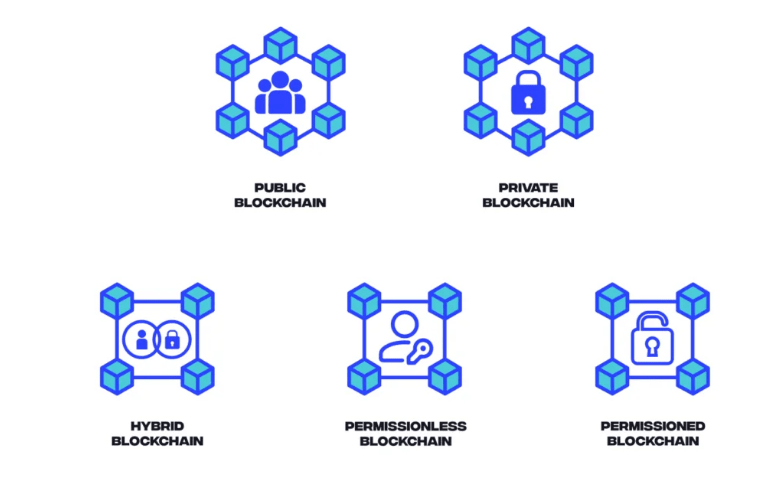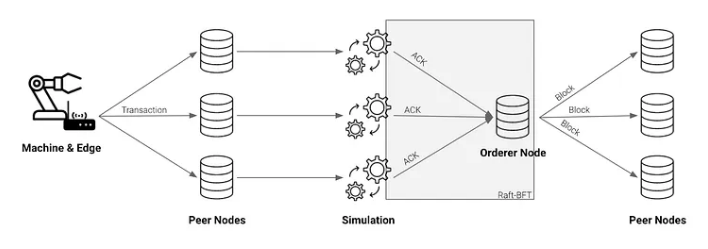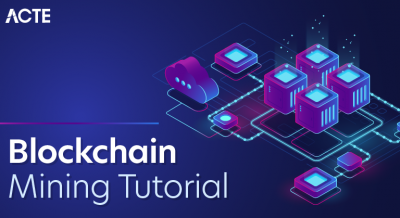
- Introduction to Consortium Blockchain
- How Consortium Blockchain Differs from Public and Private Blockchains
- Key Features and Benefits of Consortium Blockchains
- Consensus Mechanisms in Consortium Blockchains
- Use Cases and Industry Applications
- Security Considerations in Consortium Blockchains
- Challenges and Limitations
- Future Outlook for Consortium Blockchain
Introduction to Consortium Blockchain
A consortium blockchain is a type of distributed ledger where the control of the network is shared among a group of pre-selected organizations, rather than being managed by a single entity or left completely open to the public. This governance structure makes it permissioned and partially decentralized, providing a balanced approach between the openness of public blockchains and the strict control of private ones. In a consortium blockchain, only authorized participants can join the network, validate transactions, and access data, which ensures that all members are known and trusted entities. Unlike public blockchains such as Bitcoin or Ethereum, where anyone can participate and no central authority exists, consortium blockchains operate under a collaborative governance model. This structure allows for greater efficiency and faster consensus, since only a limited number of nodes are involved in verifying transactions, a topic frequently explored in Blockchain Training. At the same time, the blockchain’s transparency and immutability remain intact, allowing participating members to share data in a secure and tamper-proof way. Consortium blockchains are particularly appealing to enterprises and institutions that require trust, transparency, and data integrity, but also need to maintain privacy, compliance, and control. These networks are gaining momentum in sectors such as finance, where multiple banks may need to settle transactions cooperatively, supply chain management, where various stakeholders track goods, healthcare, where patient data must be shared securely, and government services, where inter-agency coordination is vital. By offering the benefits of decentralization without compromising on performance or governance, consortium blockchains present a practical solution for organizations seeking secure, scalable, and collaborative digital infrastructure.
Are You Interested in Learning More About Blockchain? Sign Up For Our Blockchain Training Course Today!
How Consortium Blockchain Differs from Public and Private Blockchains
Public blockchains are open and decentralized networks where anyone can join, participate in transaction validation, and view the entire ledger. These networks, like Bitcoin and Ethereum, operate without a central authority and rely on consensus mechanisms such as Proof of Work or Proof of Stake to verify transactions. This openness fosters transparency and censorship resistance, making public blockchains ideal for applications where trustlessness is important. However, they often face significant challenges, including scalability issues, slower transaction speeds, and regulatory uncertainties due to their borderless and anonymous nature, factors that can influence Salary for a Blockchain Developer. In contrast, private blockchains are controlled by a single organization that determines who can participate in the network and what actions they can perform. This centralized model allows for faster transaction processing, enhanced privacy, and greater control over data. However, private blockchains sacrifice decentralization, which can introduce risks related to single points of failure, data manipulation, or abuse of power by the central authority. Consortium blockchains represent a hybrid approach, combining elements of both public and private models. In a consortium blockchain, a group of trusted organizations jointly manages the network, sharing governance responsibilities and validating transactions.

This collaborative control reduces the risks associated with centralized systems while offering better scalability, privacy, and efficiency than fully public blockchains. Participation is typically restricted to pre-approved entities, and access is permissioned, making consortium blockchains particularly well-suited for enterprise use cases. Industries like finance, healthcare, supply chain, and government services benefit from this model, as it supports secure data sharing and coordinated processes among trusted stakeholders without exposing sensitive information to the public.
Key Features and Benefits of Consortium Blockchains
- Controlled Decentralization: Consortium blockchains distribute governance among multiple trusted parties, which avoids single points of failure and minimizes the risk of malicious actions by any one participant.
- Improved Privacy: Access to transaction data is restricted to authorized members, protecting sensitive business information while maintaining transparency within the consortium.
- Enhanced Performance: With fewer nodes participating in consensus compared to public blockchains, consortium blockchains achieve higher transaction speeds and throughput, a development discussed in Industries That Blockchain Will Disrupt in Future.
- Cost Efficiency: Permissioned participation and lower computational demands reduce operating costs relative to public blockchains that use energy-intensive consensus methods.
- Governance Flexibility: Consortium members can establish customized rules, consensus protocols, and data-sharing policies tailored to their collective requirements.
- Interoperability: These blockchains can be designed to connect with external systems and other blockchain networks, enabling hybrid and integrated solutions.
- Ideal for Multi-Stakeholder Environments: Due to these features, consortium blockchains are well-suited for industries where secure, efficient, and auditable transactions are essential among multiple parties.
- Consensus Methods in Consortium Blockchains: Unlike public blockchains that use energy-intensive algorithms like Proof of Work (PoW), consortium blockchains utilize faster and more efficient consensus protocols suited for permissioned networks.
- Practical Byzantine Fault Tolerance (PBFT): PBFT enables nodes to reach consensus even when some participants act maliciously or fail, providing resilience in controlled environments typical of consortiums, a scenario often examined in Blockchain Training.
- Raft Consensus: Raft uses a leader-based approach that optimizes transaction speed and efficiency in smaller, trusted groups, making it ideal for consortium blockchains with limited members.
- Federated Consensus: Used by networks like Ripple, Federated Consensus allows a selected group of validators chosen by consortium members to approve transactions collaboratively.
- Reduced Computational Overhead: These consensus algorithms require significantly less computational power compared to Proof of Work, lowering energy consumption and costs.
- Lower Transaction Latency: Faster consensus mechanisms decrease transaction confirmation times, improving throughput and user experience in enterprise applications.
- Tailored Consensus Selection: The choice of consensus protocol depends on factors such as consortium size, trust levels among participants, and regulatory or compliance requirements, ensuring a balance between security and performance.
- Permissioned Access Risks: Although consortium blockchains are more secure than traditional centralized systems, their permissioned nature means insider threats or collusion among members can jeopardize data integrity and privacy.
- Identity and Access Management: Strong identity verification and access controls are crucial to ensure that only authorized participants can validate transactions and access sensitive information.
- Consensus Protocols: Choosing and configuring consensus mechanisms carefully is vital to tolerate faults and malicious actors within the consortium, maintaining network reliability, an important skill covered in How To Become a Blockchain Developer.
- Data Protection Measures: Encryption and off-chain storage solutions help safeguard confidential data that should not be visible to all network participants.
- Security Audits and Testing: Conducting regular security audits and penetration testing helps identify vulnerabilities and reinforces the blockchain’s defenses against attacks.
- Transparent Governance: Clear governance frameworks promote accountability, foster trust among members, and enhance the consortium’s overall security posture.
- Regulatory Compliance: Addressing legal and regulatory differences across jurisdictions is essential to ensure that the consortium operates within applicable laws and reduces compliance risks.
To Explore Blockchain in Depth, Check Out Our Comprehensive Blockchain Training Course To Gain Insights From Our Experts!
Consensus Mechanisms in Consortium Blockchains

Use Cases and Industry Applications
Consortium blockchains are transforming various industries by enabling secure and efficient collaboration among competing organizations. In the finance sector, consortium blockchains improve interbank settlements by speeding up transaction times and lowering costs. They also facilitate complex processes like trade finance and syndicated lending, where multiple banks participate in a loan, by providing a shared, tamper-proof ledger that reduces fraud and errors. This increased transparency helps build trust among financial institutions while maintaining confidentiality. In supply chain management, consortium blockchains allow stakeholders such as manufacturers, shippers, and retailers to track the provenance and authenticity of goods in real time. This transparency enhances accountability, reduces the risk of counterfeit products, and improves inventory management, key topics in How to Start a Career in Blockchain Technology. By recording every transaction and movement on an immutable ledger, consortium blockchains enable end-to-end visibility across the supply chain. The healthcare industry benefits by securely sharing sensitive patient records among hospitals, insurers, and regulatory bodies. Consortium blockchains provide a way to maintain privacy compliance while enabling seamless data exchange, improving patient care and reducing administrative overhead. This also supports efficient billing and claims processing. Governments use consortium blockchains for applications like identity management, digital voting, and inter-agency data sharing. These systems improve efficiency, reduce fraud, and increase public trust in government processes. Other sectors adopting consortium blockchains include energy trading, where decentralized networks facilitate peer-to-peer transactions; insurance, for faster claims processing; and digital rights management, to protect intellectual property. The shared governance model of consortium blockchains ensures that all stakeholders can collectively verify and audit transactions. This collaborative trust mechanism is especially valuable in competitive environments, where transparency and security are paramount.
Security Considerations in Consortium Blockchains
Challenges and Limitations
Despite offering a balanced approach between public and private blockchain models, consortium blockchains are not without their limitations. One of the primary challenges is governance complexity, which arises from coordinating decision-making among multiple stakeholders. These participants often have different interests, priorities, and levels of influence, making it difficult to reach consensus on critical issues such as protocol upgrades, rule changes, membership criteria, and data-sharing policies. Disagreements in these areas can stall progress, create internal conflicts, or even lead to fragmentation of the network. While consortium blockchains tend to be more scalable than public blockchains due to their permissioned nature and limited validator nodes, they are still susceptible to performance bottlenecks as the number of participants increases. Achieving interoperability with other blockchains and external enterprise systems remains a technical hurdle, as standardized communication protocols are still evolving, a challenge discussed in “ What is Blockchain Technology & How Does It Work.” This can limit the flexibility and integration potential of consortium networks in broader digital ecosystems. Another key challenge is managing the privacy versus transparency trade-off. While data transparency is a strength of blockchain, consortium participants often need to safeguard sensitive or proprietary information. Designing a system that balances auditability with data confidentiality is complex and requires advanced privacy-preserving techniques. Furthermore, the initial setup and ongoing maintenance of a consortium blockchain can involve substantial infrastructure costs and require a high level of trust and cooperation among founding members. Lastly, because consortium blockchains are only partially decentralized, they may not align with the ideals of communities that value complete decentralization and trustless environments. Understanding and addressing these limitations is essential for the effective deployment and long-term success of consortium blockchain solutions.
Go Through These Blockchain Interview Questions and Answers to Excel in Your Upcoming Interview.
Future Outlook for Consortium Blockchain
The future of consortium blockchains appears increasingly promising as industries across the globe begin to recognize the unique value offered by collaborative, permissioned distributed ledger systems. These blockchains strike a practical balance between decentralization and control, making them ideal for scenarios where multiple organizations must work together securely and transparently without relying on a single central authority. As technology continues to evolve, advancements in interoperability protocols will play a crucial role in enabling consortium blockchains to communicate seamlessly with other blockchains and legacy systems, breaking down data silos and expanding their practical utility. Privacy-enhancing technologies, such as zero-knowledge proofs and confidential computing, will further strengthen the ability of consortium networks to protect sensitive data while maintaining verifiability and trust. Additionally, innovations in scalable consensus algorithms will support greater transaction throughput and network performance, making these blockchains suitable for large-scale enterprise applications, a focus area in Blockchain Training. Emerging hybrid blockchain architectures, which integrate features from both public and consortium blockchains, are likely to become increasingly common. These models will enable private, secure collaboration among trusted parties while still offering the benefits of public transparency and auditability when needed. As regulatory frameworks around blockchain technology continue to mature, legal clarity and standardized best practices will facilitate broader adoption and foster cross-border cooperation. Moreover, the rise of decentralized finance (DeFi) and tokenization may spur the creation of new consortium models involving financial institutions, regulators, and technology providers. In a world where trust and collaboration are becoming vital for innovation, consortium blockchains are positioned to become core infrastructure for next-generation digital ecosystems. Ongoing innovation, governance alignment, and strong cybersecurity will be key to realizing their full potential.




